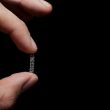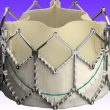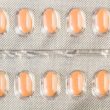At present TAVR is a valid alternative to treat different risk groups of patients with severe aortic stenosis. Among the different valves, there are two types, the self-expanding (SEV) and the balloon expandable (BEV) valves, that are the most implanted and the most researched by randomized studies across different risk groups. There are different generations<a href="https://solaci.org/en/2022/12/16/is-there-any-difference-between-modern-valves-and-self-and-balloon-expandable-valves/" title="Read more" >...</a>
Valve-in-Valve Shows Good Evolution after 2 Years
The degeneration of bioprostheses in aortic position occurs at approximately after 10 to 15 years. In this scenario, the treatment of choice used to be redo surgery, but with the evolution of transcatheter aortic valve replacement (TAVR), it became a valid alternative with a level IIa B evidence. While there are currently multiple analyses of<a href="https://solaci.org/en/2022/12/02/valve-in-valve-shows-good-evolution-after-2-years/" title="Read more" >...</a>
Apixaban and Valve Thrombosis after TAVR
TAVR has been associated with early valve thrombosis, characterized by thrombus formation in the prosthetic valve with or without valve dysfunction. This dysfunction is related to leaflet thickening and reduced motion, reduced effective orifice area, or increased transvalvular gradient. A multidetector CT scan allows the dynamic assessment of valves and ruling out fibrosis vs. thrombosis. <a href="https://solaci.org/en/2022/09/14/apixaban-and-valve-thrombosis-after-tavr/" title="Read more" >...</a>
Surgical Bioprosthesis Deterioration: Is the Valve-in-Valve Technique a Good Option?
The use of surgical bioprostheses has significantly increased, and while they last 15 years or more, in cases where they fail (usually due to stenosis), the decision-making process is challenging. Transcatheter aortic valve replacement (TAVR) is a good alternative for this situation, although information on the subject matter is still scarce. Currently, the only available<a href="https://solaci.org/en/2022/08/18/surgical-bioprosthesis-deterioration-is-the-valve-in-valve-technique-a-good-option/" title="Read more" >...</a>
EuroPCR 2022 | Changes in Cardiac Damage after Surgical Aortic Valve Replacement
This study presented at EuroPCR 2022 analyzed the PARTNER study pool and included 1974 patients with a complete echocardiogram. Surgical risk was 17.3% extreme/inoperable, 54.3% intermediate and 28.4% low. 60% received transcatheter aortic valve replacement (TAVR) and the rest surgical aortic valve replacement (SAVR). 6.1% of patients were in stage 0 (no damage), 14.5% were<a href="https://solaci.org/en/2022/05/19/europcr-2022-changes-in-cardiac-damage-after-surgical-aortic-valve-replacement/" title="Read more" >...</a>
Low Risk Patients: TAVR with Self-Expanding Valves Offers Similar Outcomes to Surgery Based on a Bayesian Analysis?
When compared against surgical valve replacement (SAVR) transcatheter aortic valve replacement (TAVR) has shown benefits across different risk groups, not only in events as death and stroke, but also in quality of life (especially in the first months post procedure) and improved symptoms. However, a catch-up phenomenon was observed in low-risk patients between the first<a href="https://solaci.org/en/2022/03/17/low-risk-patients-tavr-with-self-expanding-valves-offers-similar-outcomes-to-surgery-based-on-a-bayesian-analysis/" title="Read more" >...</a>
Are Self-Expandable Valves a Valid Option in Bicuspids?
Bicuspid Aortic Valves (VAV) are challenging for TAVR given its anatomical characteristics and the important presence of calcification. However, current data are promising. Even though traditionally excluded from the larger randomized studies, self-expandable valves appear to have similar evolution to tricuspid aortic valves (TAV) with severe stenosis. Researchers looked at the Low-Risk Bicuspid Study and<a href="https://solaci.org/en/2022/03/16/are-self-expandable-valves-a-valid-option-in-bicuspids/" title="Read more" >...</a>
Are Expandable-Balloon Valves an Option for the Bicuspid Valve in Low-Risk Patients?
Bicuspid aortic valve malformation is the most frequent cardiac malformation (about 1%), and a significant percentage of these cases generate severe aortic stenosis. As we know, transcatheter aortic valve replacement (TAVR) has been developed for tricuspid valves, which are studied in the most important randomized trials for high-, medium-, and low-risk patients. While current information<a href="https://solaci.org/en/2022/03/16/are-expandable-balloon-valves-an-option-for-the-bicuspid-valve-in-low-risk-patients/" title="Read more" >...</a>
TAVR vs Sutureless Surgical Aortic Valve Replacement in Low-Risk Patients
Sutureless surgical aortic valve replacement (SU-SAVR) has been designed to make surgical valve replacement easier and faster, especially compared against conventional biological valves which require multiple sutures; their rapid deployment translates into reduced cross-clamp and operative time. These valves shorten operating time and are less invasive than conventional surgical valves. Except for sternotomy incisions, they<a href="https://solaci.org/en/2021/11/19/tavr-vs-sutureless-surgical-aortic-valve-replacement-in-low-risk-patients/" title="Read more" >...</a>
TCT 2021 | SURTAVI: Good News for the Self-Expandable Valve at 5 Years
After a 5-year followup, the transcatheter aortic replacement (TAVR) with the self-expandable valve has offered clinical outcomes similar to surgical aortic valve replacement (SAVR) outcomes for intermediate risk patients. As we already knew form the 2-year followup, the all-cause or disabling stroke rate at 5 years between TAVR and SAVR continued to be similar (31.3%<a href="https://solaci.org/en/2021/11/09/tct-2021-surtavi-good-news-for-the-self-expandable-valve-at-5-years/" title="Read more" >...</a>








